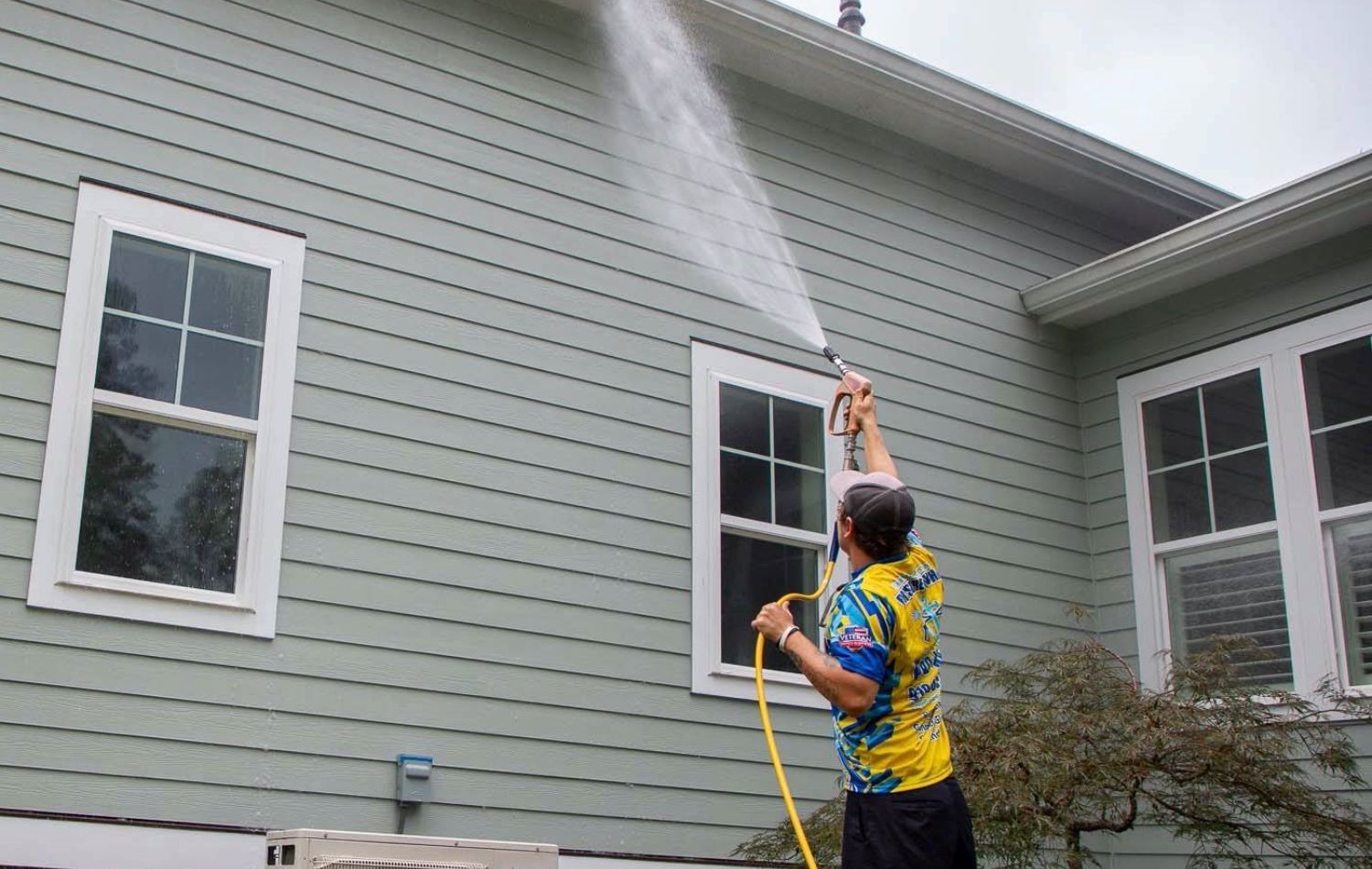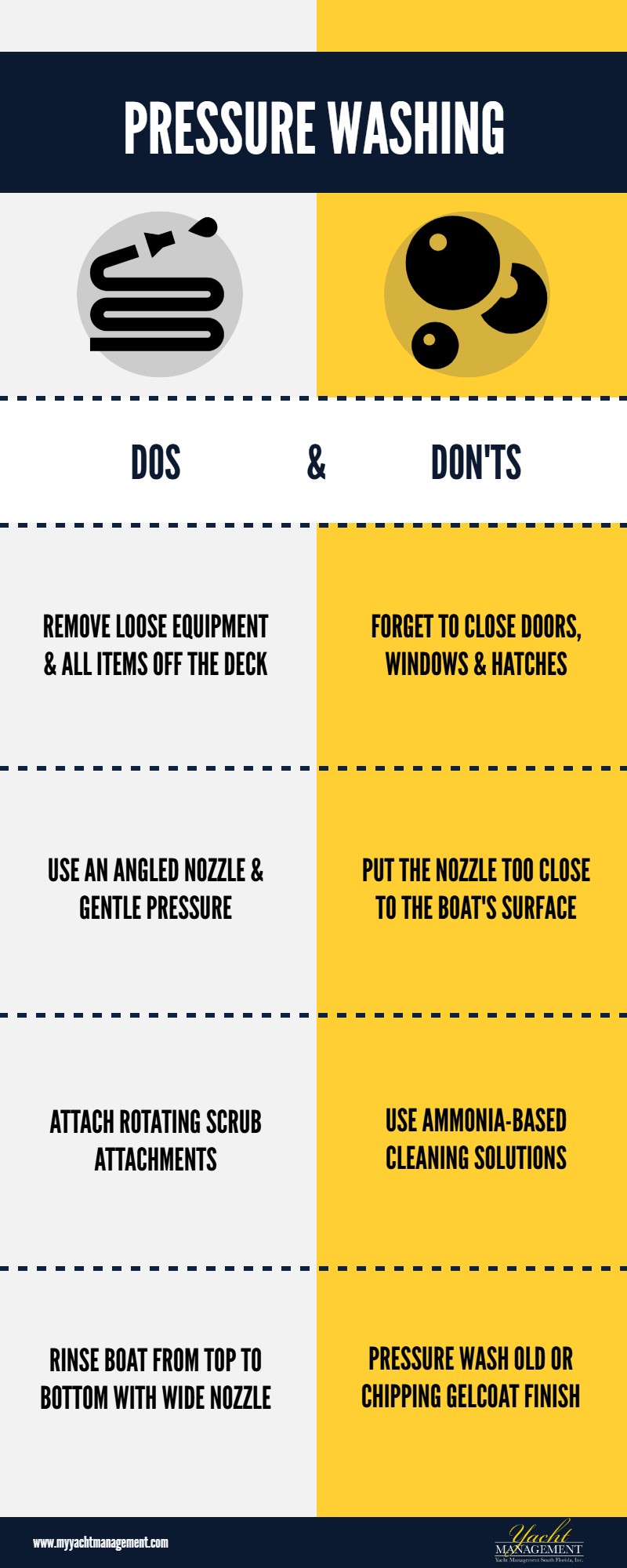Do’s and Don’ts of Window and Siding Pressure Washing
Are you tired of spending hours trying to clean your windows and siding, only to end up with streaks and damage? Well, worry no more!
In this guide, we will walk you through the do’s and don’ts of window and siding pressure washing, ensuring you achieve pristine results every time.
Imagine this scenario: you have just purchased a new home with beautiful windows and siding, but they are covered in dirt and grime. By following our expert advice, you will learn the proper safety precautions, how to choose the right equipment, and the best techniques for window cleaning and siding pressure washing.
Say goodbye to streaks and damage, and say hello to sparkling clean windows and siding!
Key Takeaways
– Always wear protective goggles and appropriate clothing to safeguard yourself from debris and chemicals.
– Choose the right equipment based on the size and dirtiness of the project, considering the pressure settings and fuel type.
– Use proper technique for window cleaning, including choosing the right nozzle, standing at a distance, and cleaning from top to bottom.
– Follow best practices for siding pressure washing, adjusting the pressure, removing debris, and being cautious around delicate areas.
Safety Precautions
To ensure your safety during window and siding pressure washing, always wear protective goggles. This simple step is crucial in safeguarding your eyes from potential debris, chemicals, or water splashes that may occur during the cleaning process. Protective goggles provide a barrier between your eyes and any harmful substances, preventing injuries such as eye irritation, chemical burns, or foreign objects getting lodged in your eyes.
Additionally, it’s important to wear appropriate clothing while pressure washing. Choose clothing that covers most of your body, including long sleeves, long pants, and closed-toe shoes. This will protect your skin from any potential contact with chemicals or high-pressure water. Avoid wearing loose clothing or accessories that could get caught in the equipment, as this could lead to accidents or injuries.
Furthermore, be mindful of your surroundings when pressure washing. Make sure the area is clear of any obstacles or people to avoid accidents. Keep children and pets away from the work area to prevent them from getting injured or interfering with the cleaning process.
Choosing the Right Equipment
First, consider the size and power requirements of the pressure washer you’ll need for window and siding pressure washing. The size of your pressure washer should be determined by the area you plan to clean. For smaller areas, a compact and lightweight pressure washer will suffice. However, for larger areas or heavily soiled surfaces, you’ll need a more powerful and robust pressure washer.
When choosing a pressure washer, pay attention to the PSI (pounds per square inch) and GPM (gallons per minute) ratings. Higher PSI and GPM ratings indicate a more powerful machine that can effectively remove dirt and grime from windows and siding. Additionally, ensure that the pressure washer has adjustable pressure settings, as this will allow you to customize the pressure according to the surface you’re cleaning.
Furthermore, consider the type of fuel the pressure washer requires. Electric pressure washers are suitable for small to medium-sized projects and are more environmentally friendly. On the other hand, gas-powered pressure washers are ideal for larger projects as they offer more power and mobility.
Proper Technique for Window Cleaning
Are you unsure of the proper technique for cleaning windows using a pressure washer? Don’t worry, we’ve got you covered. Follow these simple steps to ensure your windows are sparkling clean without any damage:
– Choose the right nozzle: Opt for a nozzle with a wider spray pattern to avoid concentrated streams that can damage the glass.
– Keep a safe distance: Stand at least two feet away from the window while cleaning to prevent any accidental damage.
– Use gentle pressure: Start at a low pressure setting and gradually increase if needed. Too much pressure can crack or break the glass.
– Clean from top to bottom: Begin at the top of the window and work your way down in overlapping strokes. This will ensure an even clean and prevent streaks.
– Rinse thoroughly: After cleaning, be sure to rinse the window thoroughly with clean water to remove any soap residue.
By following these simple steps, you can achieve professional-looking results without any damage to your windows. Remember to always prioritize safety and take your time for the best outcome.
Happy cleaning!
Best Practices for Siding Pressure Washing
For optimal results, regularly and gently pressure wash your siding. Siding is prone to accumulating dirt, grime, and mildew over time, which can affect its appearance and longevity. By following these best practices, you can effectively clean and maintain your siding.
Firstly, it’s important to adjust the pressure of your pressure washer according to the type of siding you have. Vinyl and aluminum sidings can withstand higher pressures, while wood and delicate sidings require lower pressures to avoid damage. Always start with a lower pressure setting and gradually increase if necessary.
Before starting the pressure washing process, make sure to remove any loose debris or dirt from the surface. This can be done with a soft brush or broom. This step will prevent the pressure washer from pushing dirt further into the siding and causing potential damage.
When pressure washing, hold the nozzle at a 45-degree angle to the siding and work in small sections. This will ensure an even and thorough cleaning. Avoid spraying directly at an upward angle, as it can force water underneath the siding and cause water damage.
Lastly, be mindful of any delicate areas such as windows, doors, and vents. Use a lower pressure setting and exercise caution when cleaning around these areas to avoid causing any damage.
Avoiding Common Mistakes

To avoid common mistakes when pressure washing windows and siding, it’s crucial that you take certain precautions and follow proper guidelines. Here are some key points to keep in mind:
– Using too much pressure: Applying excessive pressure can damage the surface you’re cleaning. Make sure to adjust the pressure according to the material and condition of the window or siding.
– Neglecting safety gear: Remember to wear protective goggles, gloves, and suitable clothing to shield yourself from potential injuries and chemical exposure.
– Not using the right cleaning solution: Using the wrong cleaning solution can lead to ineffective cleaning or even damage the surface. Always choose a solution that’s appropriate for the material you’re working with.
– Ignoring the weather conditions: Avoid pressure washing on windy days as it may spread debris or chemicals onto neighboring properties. Additionally, extremely hot or cold temperatures can affect the effectiveness of the cleaning process.
– Skipping the pre-wash inspection: Take the time to inspect the windows and siding before starting the pressure washing. Look for any cracks, loose panels, or other vulnerable areas that may require special attention.
Frequently Asked Questions
What Are the Potential Risks and Dangers of Window and Siding Pressure Washing?
The potential risks and dangers of window and siding pressure washing include:
– Damage to the surfaces
– Injury from high-pressure water
– The use of harsh chemicals
It’s important to be cautious and follow safety guidelines. Some tips to keep in mind are:
– Don’t point the pressure washer directly at windows or fragile siding materials
– Avoid using excessive pressure that can cause cracks or chips
– Always wear protective gear, such as goggles and gloves
– Read the instructions for any cleaning solutions you use.
How Often Should Window and Siding Pressure Washing Be Done?
You should consider how often window and siding pressure washing should be done.
Regular cleaning is important to maintain the appearance and condition of your windows and siding.
Factors such as location, climate, and the level of dirt buildup will determine the frequency.
Generally, it’s recommended to have them pressure washed at least once or twice a year.
This will help prevent dirt, mold, and other debris from causing damage and ensure your home’s exterior stays clean and well-maintained.
Can Pressure Washing Damage Windows or Siding?
Pressure washing can potentially damage both windows and siding if not done correctly. The high pressure of the water can cause cracks or breakage in windows, and it can also strip away paint and damage the siding.
However, if you follow the do’s and don’ts of window and siding pressure washing, you can minimize the risk of damage.
Firstly, it’s important to use the correct pressure setting. Adjust the pressure washer to a lower setting to avoid excessive force on the windows and siding.
Secondly, avoid spraying directly at windows. Instead, aim the spray at an angle to prevent water from getting into the cracks and causing damage.
Lastly, use a gentle detergent to protect the siding. Avoid using harsh chemicals or abrasive cleaners that can strip away the paint or cause discoloration.
Is It Necessary to Use Chemical Cleaners When Pressure Washing Windows and Siding?
Is it necessary to use chemical cleaners when pressure washing windows and siding?
It depends on the situation. While pressure washing alone can effectively remove dirt and grime, using chemical cleaners can provide an extra level of cleanliness. They can help tackle tough stains and mildew.
However, it’s important to use the right cleaners that are safe for your specific type of windows and siding. Always follow the manufacturer’s recommendations and use caution to avoid damaging the surfaces.
Are There Any Precautions to Take When Pressure Washing Windows and Siding Near Plants or Landscaping?
When pressure washing windows and siding near plants or landscaping, there are a few precautions you should take.
First, make sure to cover any delicate plants or flowers with a tarp or plastic sheeting to protect them from the force of the water.
Additionally, avoid spraying water directly onto the plants or flowers, as this could damage them. Instead, aim the pressure washer away from the plants and towards the windows or siding.
Conclusion
In conclusion, by following the do’s and don’ts of window and siding pressure washing, you can ensure a safe and effective cleaning process.
Remember to prioritize safety precautions, choose the right equipment, use proper techniques for window cleaning, and follow best practices for s find more info iding pressure washing.
By avoiding common mistakes, you can achieve optimal results and maintain the longevity of your windows and siding.

Welcome to my website! My name is Archer Michael, and I am a dedicated professional Pressure Washing Supervisor with a passion for promoting green cleaning practices and providing top-notch services to businesses. With years of experience in the industry, I have developed a deep understanding of the importance of maintaining clean and presentable exteriors for commercial establishments.


